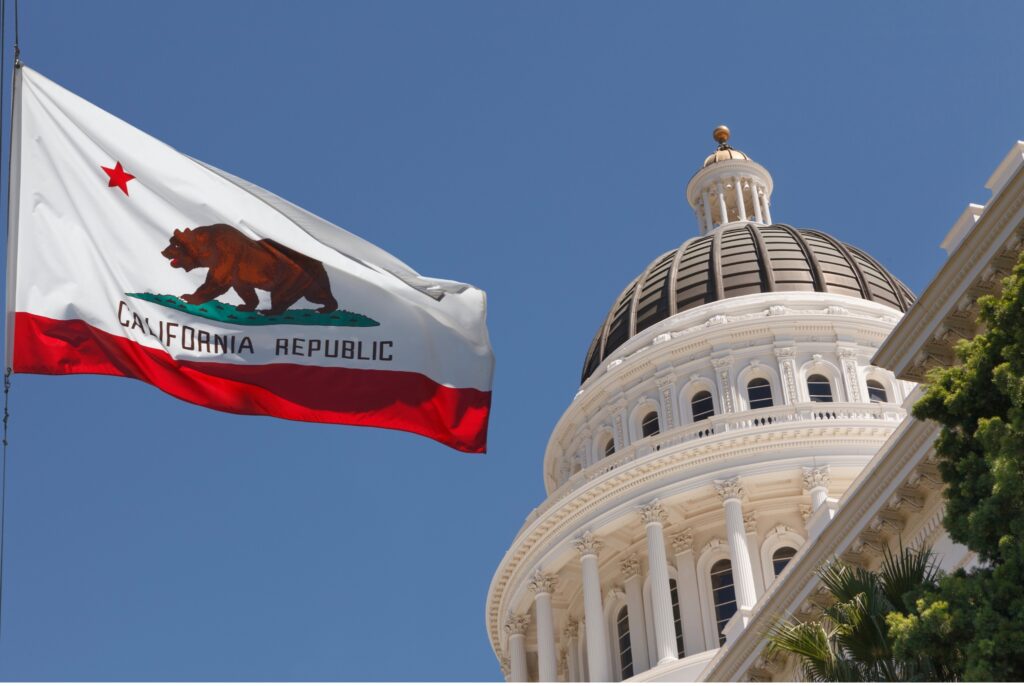Some Good News About the El Segundo Chevron Explosion
The Drain is a weekly roundup of environmental and climate news from Legal Planet.

When the state’s second-largest refinery emitted a fireball into the heavens last week, it was bad. But it wasn’t all bad. The “incident” at the Chevron refinery in El Segundo was a good reminder that air pollution is present during the entire life cycle of oil and gas products, from when it comes out of the ground to when it combusts. And sometimes when it explodes near local communities.
For months, the conversation around California’s oil production has been dominated by breathless coverage about two of the state’s refineries closing earlier than expected and how cost concerns have chilled the Legislature’s ambitions toward transitioning toward a carbon-free future. But oil and gas comes with hidden costs we like to ignore — until we can’t. The explosion and fire created massive flames visible for miles across the South Bay. “I thought we got nuked or something,” one person playing soccer nearby told the LA Times.
“As someone who lives less than a mile from the Torrance Refinery, the explosion in El Segundo came as no surprise,” my UCLA colleague Brennon Mendez told me. “When I was growing up near the Torrance Refinery, the question was not ‘will there be an explosion at the refinery?’ but rather ‘when will an explosion happen at the refinery?’ he said.
The Torrance Refinery did suffer an explosion 10 years ago. Mendez, a law fellow at the Emmett Institute, has written extensively about how residents there are still organizing a decade later for fundamental safety improvements like the phasing out of toxic hydrofluoric acid. “I hope that the El Segundo explosion serves as a wake-up call for the public to recognize the harms posed by oil refining in southern L.A. County, and elsewhere in California and beyond,” he said.
The El Segundo fire burned all night, leading to air-quality concerns, though the company said that fence line monitoring did not reveal any “exceedances.” That was the other good news — though it might have been good luck. UCLA scientist Suzanne Paulson told LAist that we lucked out because winds were blowing offshore, keeping pollution away from communities. “And because of relatively windy conditions through the day, Paulson said the smoke from the fire will dilute more quickly,” Erin Stone and Kyle Chrise report for LAist.
The timing was not all good. “The Trump administration has defunded the Chemical Safety board, and the federal government is shut down right now,” said Coalition for Clean Air’s Joe Lyou, a resident of nearby Hawthorne and president of the Coalition for Clean Air. “So, there is a very good possibility we are never going to know what really caused this, because the experts in figuring this stuff out are no longer there to do that,” Lyou said.
Some coverage still focused on gas prices. “It’s expected to boost Southern California gas prices almost immediately,” Laurence Damiento reported almost immediately. Other coverage focused on malfeasance. Turns out Chevron’s facility has received notices that it was in violation of environmental safety rules 46 times — 13 came in the last year, Tony Briscoe and Connor Sheets uncover.
That reporting provides a good reminder too. Energy affordability is important, but oil and gas facilities always come with costs, usually paid by vulnerable communities. “From Richmond to El Segundo, communities know too well that this isn’t an isolated incident and it’s unlikely to be the last,” advocates at Communities for a Better Environment posted on their Instagram page. “They’re the predictable result of an unjust industry built on toxic, explosive fuel.”

So, when Phillips 66 announced it will soon close its own South Bay refinery — not far from Chevron’s — some nearby Wilmington residents were focused on the oil waste that is still in the soil and water table, not just on the potential impact to gas prices in the future. “In some areas, the contaminated underground layer is more than 16 feet thick,” Aaron Cantú reported for Capital & Main. Rather than being simply a good or bad development, shuttering a long-standing refinery is messy as hell.
“The demise of the Phillips 66 refinery after more than 100 years is not solely an economic story or an environmental story, or a policy, development or public health story,” writes Madeleine Armstrong this week at the LA Daily News. “Rather, it is all of that together – and more.”
Amen. So too is the story of the Chevron refinery explosion. It reminded me of a groundbreaking report from August that found air pollution from oil and gas causes more than 90,000 premature deaths across the US each year. That same pollution also sickens hundreds of thousands of people, with disproportionately high impacts on communities of color. The highest number of impacts are seen in a few US states, the Guardian noted, including California.
Welcome to The Drain, a weekly roundup of environmental and climate news from Legal Planet. This week’s song is “This Monkey’s Gone to Heaven,” the rare Pixies song with environmental themes (industrial sludge, fires burning, etc). Read on for more California headlines, energy developments, and media moves…
California

No more icy peaks in Yosemite? Glaciers in California’s mountains are disappearing fast and will likely be gone by the end of the century. There is no precedent in the last 20,000 years for their disappearance, Danielle Venton reports for KQED. “When these glaciers die off, we will be the first humans to see ice-free peaks in Yosemite,” a researcher told LAT’s Ian James.
A contrast in California wildfires: More homes have been lost to wildfire in the last 8 years than in any other period in California history. The five most destructive from 2017 to 2020 burned down 22,500 houses, a new LA Times analysis found. The story looks at 5 recent destructive wildfires to explore how California communities recover from disaster.
Emily Sanders looks at the California bill awaiting Gov. Newsom’s signature that would set standards for carbon pipelines used to transport carbon dioxide, replacing the state’s pipeline moratorium.
Frida Garza of Grist examines why California’s small farmers are feeling more squeezed than ever, as well as a lifeline: The state’s farm-to-school grant program has been effective at supporting economically disadvantaged farmers in the face of mounting federal cuts.
A former oil field on California’s Central Coast is on track (if slowly) to become a federally protected wildlife habitat after decades of environmental cleanup. Chevron says it will donate about 2,700 acres of coastal dunes formerly part of the Guadalupe oil field to the U.S. Fish and Wildlife Service, after 3-5 more years of work, KCBX reports.
Lawmakers in Sacramento rarely vote “no.” But these three Democrats have decided it’s OK to buck protocol and vote against their colleagues’ bills, CalMatters says.
Trump Administration
The Trump administration declared it would cancel nearly $8 billion in energy projects (“Green New Scam funding to fuel the Left’s climate agenda”) targeting 16 Blue states that voted for Kamala Harris last year. Two separate sources provided Canary Media’s Jeff St. John with a list of the 321 grants being targeted by the DOE. The vast majority are in blue states.
But Emily Pontecorvo at Heatmap News lists some of the grants that will cost jobs and revenue in Florida, Louisiana and other Republican-led states.
Speaking of which, a handful of moderate Republicans are breaking with Trump over their renewed push to subsidize boost coal-fired power generation and dying coal plants.
The Energy Department also canceled its funding for ARCHES — the Alliance for Renewable Clean Hydrogen Energy Systems last week. The Irvine-based public-private partnership was set up to distribute funding to hydrogen projects across California, Politico reports.
A new report from Public Citizen and the Revolving Door Project analyzed the backgrounds of 111 nominees and appointees to the EPA and Interior Department. “They found 43 people with ties to the fossil fuel industry and 12 people tied to right-wing think tanks, many of which receive funding from oilmen,” Inside Climate News reports.
Some Big Oil executives are not ok with Trump’s war on wind. The president of Shell U.S. says the administration’s attacks on nearly complete, permitted offshore wind projects are “very damaging” to investment and set a bad precedent that could come back to bite oil and gas in the future.
Trump’s EPA plans to rewrite a Biden-era rule curbing a major source of greenhouse gas emissions from air conditioners and refrigerators. But appliance makers, the Washington Post reports, had been preparing for months to comply with the new rules and voiced apprehension at the last-minute shift.
This kind of industry apprehension was one of the themes that came up our recent UCLA webinar “Up in the Air” about the endangerment finding (YouTube recording here). Chances are auto industry players will miss a national standard for vehicles if the alternative is a bunch of differing state standards. On that subject, several former EPA Administrators wrote to current Administrator Lee Zeldin, expressing opposition to the endangerment finding proposal and urging him to “follow the law, the science, and EPA’s mission” by withdrawing the revocation plan.
Other Energy Stories
Whoa! New solar and wind installations outpaced global electricity demand growth in the first half of the year. And for the first time ever it beat out old, dirty coal over that period, Ember finds.
Two growing trends to watch: 1) Local opposition to grid storage installations is growing nationwide as communities enact moratoriums against the projects — usually citing an unacceptable fire risk and 2) only 44% of those polled would want a data center nearby to where they live.
And Robinson Meyer was on NPR’s Morning Edition this week talking about why the cost of electricity is rising twice as much as inflation — the cost of maintaining the grid — and how it’s a “hidden cost of climate change.”
Courts and Litigation
Yesterday was the first Monday in October. (More like First Moanday, Dan Farber writes). SCOTUSblog notes that since 1917, First Monday has meant the Supreme Court is back in session. However, over the past 108 years, the justices haven’t always heard cases on the first Monday in October, as they will today.
The justices heard arguments in two cases: Villarreal v. Texas (on when lawyers can be barred from speaking to their clients) and Berk v. Choy (on whether state limits on malpractice actions apply in federal court).
And the justices declined to consider whether the state of Washington’s cap-and-trade greenhouse gas program discriminates against other states.
A federal judge in Louisiana ruled last Thursday that President Biden exceeded his authority by withdrawing large areas along U.S. coastlines from future offshore oil and gas development.
Also last week, climate youth plaintiffs filed a petition at the Inter-American Commission on Human Rights, the seven-member commission that for decades has evaluated human rights violations across 35 countries in the Americas. Some of these plaintiffs were involved in the famous Juliana case, including four Indigenous plaintiffs, Grist notes.
Media News

After seven illuminating, award-winning years at the LA Times, climate columnist Sammy Roth says today is his last day at the paper. Huge loss for LA Times readers, who have benefited from one of the only opinion columnists in the climate space. His reporting drove series like “Repowering the West.” Just last week, Roth was reporting from a Utah coal plant on California finally quitting coal. The paper retains great talent on the Climate & Environment desk though. Watch his social media feeds for what’s next.
Grist is expanding its Local News Initiative to Utah and Nebraska, with new partnerships at The Salt Lake Tribune and Flatwater Free Press, editor-in-chief Katherine Bagley announced late last month. The initiative already has embedded reporters in Georgia, Michigan, Illinois, North Carolina, and Louisiana producing stories that reach hundreds of local outlets through syndication networks, all for free.
Bari Weiss is becoming CBS News editor in chief as Paramount acquires her digital outlet the Free Press for a whopping $150 million. Meanwhile, CBS and MSNBC both just released their new “journalistic principles” for the newsrooms.
“The People Say No: Resisting Data Centers in the South” is a new report from the group MediaJustice that uses research and case studies to explore how tech corporations stand to benefit from the data center boom while residents could suffer. FAIR is encouraging media outlets to report more on the tradeoffs.
Other Things Worth Your Time
Plenty of good remembrances of Jane Goodall. UCLA Law Professor Alex Wang is quoted in an Associated Press article about the influence of Goodall, including her reputation in China because she “focused on topics like environmental and conservation education for youth that had broad appeal without touching on political sensitivities.”
The Tory leader says she would replace the UK’s landmark climate change act with ‘cheap energy’ strategy, ending decades-long consensus on climate, the Guardian reports.

Attend “Día de los Muertos: Mourning and Remembering through Ecological Change” at the UCLA Mathias Botanical Garden on Nov. 1. The free event includes snacks, drinks, discussion and a garden tour hosted by the Laboratory for Environmental Narrative Strategies (LENS) and others.
Discover in this UCLA Luskin webinar how 663 Southern California’s water systems perform on water quality, affordability, and other important factors.
Participate in LA Nature Quest to join the quest to photograph animals, insects, and plants in your neighborhood and help scientists gather valuable information about biodiversity across the city.
What climate headline would you like to see in 2050? Share it. Grist’s Looking Forward newsletter recently wrote about future climate headlines.







Reader Comments